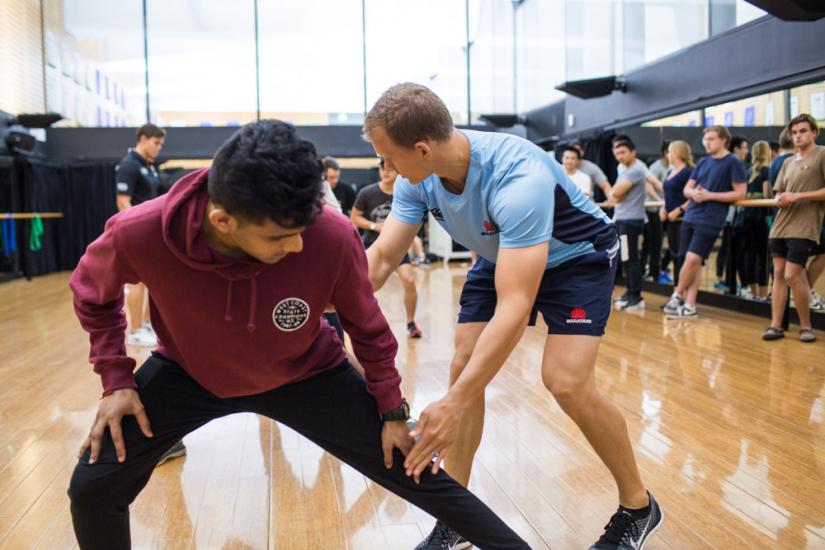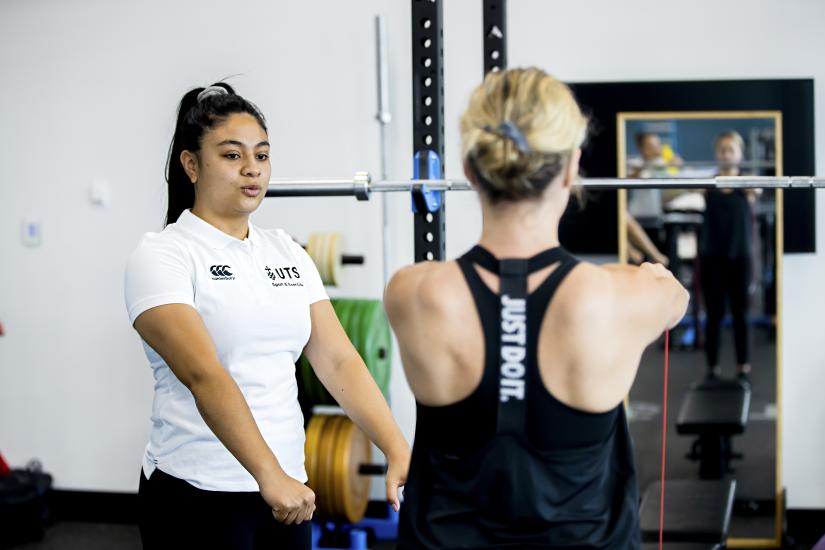A day in the life of my sport and exercise student placement
Sport and Exercise students complete up to 210 hours of professional placement through the course of their degree across a wide variety of sporting organisations.

A guest lecturer teaches Sport and Exercise students about sports and conditioning
By Jesse Maugeri, UTS Bachelor of Sport and Exercise Management student
For his professional placement, Jesse worked with a NSW Women’s National Premier League 1 Football Team to provide performance review and a recovery program for a recently injured player. Hear about his typical day!
Morning
With my placement starting at 5:45pm, I’m able to sleep in during the morning (and who doesn’t love that!). In the mornings I try to work on any assignments that are due or type out any lectures that I have coming up so that I can take down any extra additional notes.
Before I head off to my placement, I make sure that all the GPS units needed for the training session are charged and ready to go.
2.00pm
Around 2:00pm, I get sent the structure of the training session that is going to be completed for the night. I take note of the drills’ start times and durations, all of which are going to help me later in the day.
5.45pm
Upon arriving at my placement, I set up the equipment that is needed to complete the session so when they arrive it is all ready to go. I then conduct a strength session one-on-one with a player returning from a major injury.
As they perform these exercises, I coach them about the correct technique and provide them cues to execute the movement in a safe manner. It usually takes around 45 minutes for them to complete the session.

6.45pm
With the players and coaches expected to be on-field for start at 7:00pm, it is my role and responsibility to set up the prehab portion of the training session and ensure this is ready for the athletes when they arrive on field.
7.00pm
With the players starting to make their way onto the training field, it is my role to hand out their GPS units.
Each unit is labelled with a number corresponding to a certain player and this information is useful as it allows for measures of the players external load of each training session.
I then run the pre-hab component of the training session, which usually takes 15 minutes to complete. Each of the three training sessions of the week consist of different movements so I ensure that I read over and know these movements before leading the squad of roughly 36 players.
7.15pm
Once Prehab is completed, I then take the same athlete returning from their major injury through an individualised aerobic and technical session. We run through these recovery sessions each training night as they slowly progress in their return to training with the squad. This usually takes anywhere between 60 – 80 minutes depending on the focus of the session.
8.30pm
Once the training session is completed, I collect back all the GPS units and also collect each individual player's rating of perceived exertion (RPE) - which provides a measure of the players internal load of the session.
9.15pm
Once I arrive home, my role for the day is not quite over yet. I quickly grab something to eat for dinner and then it is straight to the computer to upload the GPS data from that session.
Once the syncing process is complete, I log onto the GPS companies’ website using my teams’ log in details to access the data from the training session.
Here my role is to split the data according to the drills performed at that training session. Once this is complete, I transfer this information into our teams’ spreadsheet.
This allows for the coaches and player welfare staff to view the information from each session and see if any players are at an increased risk of injury due to them being under or overloaded. This usually sees me finish around 10:30-11:00pm each night.
I follow this routine for each of the three training sessions, and for the game at the end of the week.
Once all the data is compiled at the end of the week, I send a weekly team analysis to the coaching staff and the player welfare team to assess if the loads experienced during training were similar to those experienced in the game to help design the upcoming weeks training.
